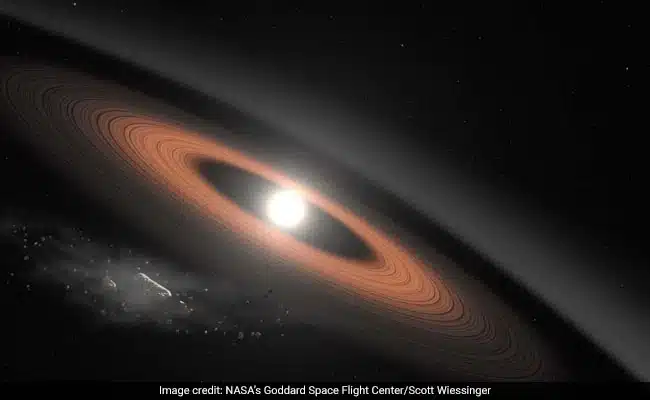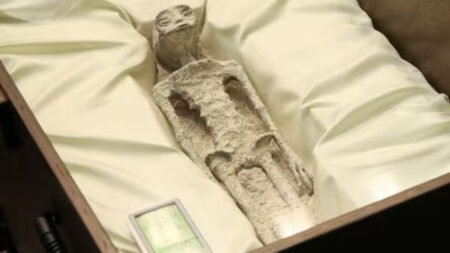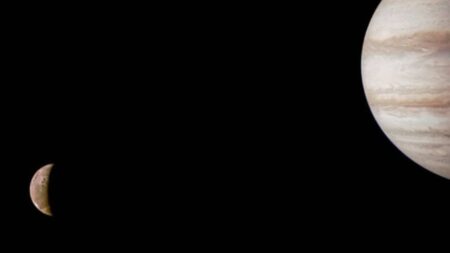The study was led by researchers from Warwick University
One of the oldest rocky and ice planetary objects seen in the Milky Way has been identified by astronomers from the University of Warwick as the oldest star in our galaxy and is accumulating debris from small planetary bodies that circle it.
The relics of the star’s orbiting planetary system are estimated to be more than 10 billion years old and are located 90 light years from Earth. The Monthly Notices of the Royal Astronomical Society released the findings yesterday, November 5th.
A group of astronomers led by the University of Warwick created models of two distinct white dwarfs that were detected by the European Satellite Agency’s GAIA space observatory for this study.
The two stars, which are both tainted by planetary material, were then analyzed by the researchers. One was found to be exceptionally blue, and the other was found to be the weakest and reddest star ever found in the neighborhood of the nearest galaxy.

Astronomers used spectroscopic and photometric data from GAIA, the Dark Energy Survey, and the X-Shooter instrument at the European Southern Observatory, In order to determine how long the “red” star WDJ2147-4035 has been cooling, They also discovered in the process that while the star is approximately 10.7 billion years old in age, it has also spent over 10.2 billion years cooling as a white dwarf.
The research team concluded that WDJ1922+0233’s distinctively blue color is due to its mixed helium-hydrogen atmosphere, despite its cooler surface temperature.
Astronomers claim that the debris from the WDJ2147-4035 red star, which was found in its otherwise nearly pure-helium and high-gravity atmosphere, came from an old planetary system that survived the star’s conversion into a white dwarf. As a result, they claim that this is the oldest planetary system surrounding a white dwarf ever discovered in the Milky Way.
Abbigail Elms, the study’s lead author and a doctoral candidate in physics at the University of Warwick, stated, “these metal-polluted stars show that Earth isn’t unique, there are other planetary systems out there with planetary bodies similar to the Earth. 97% of all stars will become a white dwarf and they’re so ubiquitous around the universe that they are very important to understand, especially these extremely cool ones.
Formed from the oldest stars in our galaxy, cool white dwarfs provide information on the formation and evolution of planetary systems around the oldest stars in the Milky Way.”
As the accreted planetary materials are lithium and potassium-rich and unlike anything known in our own solar system, the red star WDJ2147-4035 is a mystery.
This white dwarf is exceedingly interesting because of its extremely low surface temperature, the metals that it is contaminated with, its advanced age, and that it is magnetic, said Elms.
Astronomers may also measure the abundance of each metal in the original planetary body by using the star’s spectra to track how quickly those metals are assimilating into the star’s core.
We can infer the characteristics of those planets by comparing those abundances to astronomical objects and planetary material discovered in our own solar system, but in the case of WDJ2147-4035, that has proven difficult.
Pier-Emmanuel Tremblay, a professor in the University of Warwick’s Department of Physics, says, as metals are formed in evolved stars and massive stellar explosions, the cosmos was less metal-rich than it is today when these old stars formed more than 10 billion years ago.
A fascinating view into planetary formation in a metal-poor and gas-rich environment that was different from the circumstances in which the solar system began is offered by the two observed white dwarfs.
White dwarfs are the final phase in the life of the majority of stars, including our sun. A white dwarf is a star that has expelled all of its outer layers, used all of its fuel, and is now contracting and cooling.
Any planets in orbit will be disturbed and, in some cases, destroyed during this process and the remaining debris will be left to accrete onto the white dwarf’s surface.













